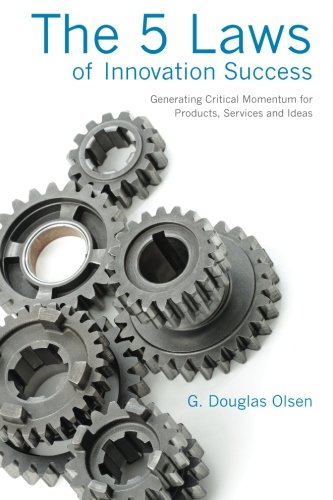The 5 Laws of Innovation Success: Generating Critical Momentum for Products, Services and Ideas / G. Douglas Olsen,
| List Price: | |
Our Price: $5.3 | |
|
For Bulk orders
| |
|
Used Book Price: | |
| The 5 Laws of Innovation Success: Generating Critical Momentum for Products, Services and Ideas / G. Douglas Olsen, | |
| Publisher: Novetics Press | |
| Availability: | |
| Sales Rank: 1511591 | |
|
Similar Books
Innovation is fundamental part of our daily lives. We are change agents in personal and professional contexts. So, while the term “innovation” would apply to the development and proliferation of high-tech products, it would also apply to: incremental changes to existing products and services; deployment of a new policy within an organization; a government program designed to decrease poverty; or even the change of some personal habit such as fitness and nutrition. So, what does it take for an innovation to be successful? Ralph Waldo Emerson suggested that, “if you build a better mousetrap the world will beat a path to your door,” meaning that if you make something better, people will want it. While there is a core of truth to this, the idea does not seem to reflect what happens in reality. Why is it that some great products, services, policies and ideas never seem to catch on and some questionable ones seem to possess a certain momentum and hang around forever? The goal of the book is to answer this question and to provide the reader with a solid resource to impact their environment. In the overview chapter, the five laws of innovation success are provided: (1) there must be superior value; (2) the stability of the existing alternative must be reduced; (3) uncertainty/fear of the new alternative must be reduced; (4) outside independent influences exert an impact; and, (5) bias in search and choice must be overcome. Following the presentation of the five laws, examples are given of large organizations that fell short because one or more were violated. Some of these include the “New Coke” Debacle, Bic marketing perfume, Levi’s trying to market three-piece suits, IBM trying to introduce a new operating system in the 90s and the questionable success of the deregulation of electricity markets in North America. The next five chapters detail each of the different laws and provide an organizing framework (the Comprehensive Change Model). This model offers additional structure to an individual trying to maximize the impact of a change initiative. The information is explicit and itemizes the factors that have an impact on each particular component – the value offering, stability, uncertainty, independent influences as well as bias in search and choice. Examples throughout the chapters provide concrete application of the concepts. In the following six chapters that comprise the second part of the book, the laws and the Comprehensive Change Model are applied to a broad range of contexts, including: (1) becoming a vegan, (2) blood donation, (3) buying a personal Taser, (4) consideration of geothermal heat-pumps, (5) adoption of nurse practitioner clinics and, (5) the government policy regarding adoption of metric in the United States – the only major country in the world not to have formally switched over. The goal of these cases is to demonstrate two things repeatedly. The first is that innovation takes many different forms – changes to products, services, policies, ideas, and so on. The professional and the personal. Internal to the organization and external to the organization. The complex and the commonplace. The second thing that the cases demonstrate is that no matter what type of change initiative one is talking about, all five laws of innovation success are critical to the outcome. Falling short on just one may lead to some level of ineffectiveness.
Now you can buy Books online in USA,UK, India and more than 100 countries.
*Terms and Conditions apply
Disclaimer: All product data on this page belongs to .
.
No guarantees are made as to accuracy of prices and information.
Now you can buy Books online in USA,UK, India and more than 100 countries.
*Terms and Conditions apply
Disclaimer: All product data on this page belongs to
 .
.No guarantees are made as to accuracy of prices and information.










